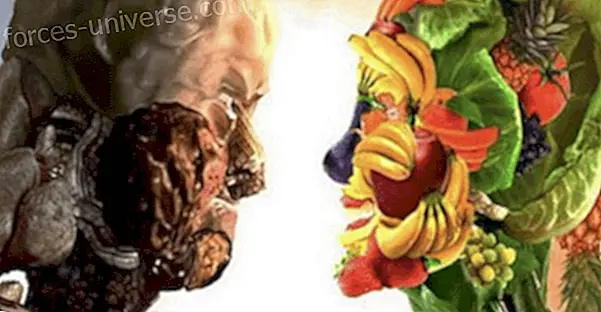 My greatest fear is that if we get carried away into this unique, global, generic and amorphous culture, not only will the range of human imagination be reduced, in a way of thinking narrowly, but one day we will wake up like a dream having even forgotten that there were other possibilities. Margaret Mead.
My greatest fear is that if we get carried away into this unique, global, generic and amorphous culture, not only will the range of human imagination be reduced, in a way of thinking narrowly, but one day we will wake up like a dream having even forgotten that there were other possibilities. Margaret Mead.
The central idea of anthropology is that the world that each of us knows is not an absolute, but is only a model of reality; a particular option of the way of life that was chosen by our ancestors, the consequence of a set of adaptive options.

The ancient cultures of the world have accumulated wisdom and appreciation, unique and profound, about details of the planet, and these cultures are, little by little, disappearing or being absorbed by the advance of "modernization." We are in serious danger of losing knowledge about environments, plants, etc., information and values that are irreplaceable.
The people of these cultures teach us that there are other ways of being, of thinking, of relating to the planet. This should give us a sense of hope. On the planet there are thousands of human groups with their own spiritual and cultural vision. This variety is as important to the planet as the "biosphere, " and we call this cultural "fabric" the "ethnosphere." We can think about the ethnosphere as if it were the total sum of all dreams, ideas, inspirations, intuitions ... the great legacy of humanity; everything we are and what we can be.
The ethnosphere is also eroding, such as the biosphere. A great indicator of this is the loss of languages. When we were born, about 6 thousand languages were spoken in the world. Language is not just a collection of grammar rules and vocabulary. Language is a flash of the human spirit, a vehicle for the soul of each culture. Half of these languages of the world today are no longer spoken or whispered in children's ears, that is, they are practically already dead languages.
Some of us often forget that when you say "different realities", they ARE REALLY different realities:
 The Barasana tribe, for example, to the Northwest of the Amazon, the people of the anaconda, believe that they came out of the belly of sacred snakes. They do not distinguish cognitively the blue color from the green, because the canopy of the heavens is equivalent to the canopy of the trees of the forest, on which they depend. They have a curious matrimonial linguistic custom called “linguistic exogamy” they must marry people from other languages (and all this is due to the mythological past). The funny thing is that in each community hut, where up to six or seven languages are spoken (by inbreeding) you never hear anyone practicing another language; they just listen until one day they start talking.
The Barasana tribe, for example, to the Northwest of the Amazon, the people of the anaconda, believe that they came out of the belly of sacred snakes. They do not distinguish cognitively the blue color from the green, because the canopy of the heavens is equivalent to the canopy of the trees of the forest, on which they depend. They have a curious matrimonial linguistic custom called “linguistic exogamy” they must marry people from other languages (and all this is due to the mythological past). The funny thing is that in each community hut, where up to six or seven languages are spoken (by inbreeding) you never hear anyone practicing another language; they just listen until one day they start talking.
The Waorani, from northeastern Ecuador, isolated, killed five missionaries with spears because when they received their photos that were thrown at them from an airplane, they thought they were "devil's cards", because they did not understand the bi-dimensional character of a photograph. They have hunters who can distinguish urine from animals in forty steps, and know what species it is.
 The Kogui, of the Sierra Nevada de Santa Marta, of Colombia, ancestors of the Tairona civilization, escaped from the invaders (first, from the Europeans, and more recently, from the drug and guerrilla cultivators) entering the high mountains . They have never been conquered, and they are still ruled by a priesthood that kidnaps children at the age of 3 or 4, and they take them to stone huts in the lower part of the glaciers, and there they leave them plunged into darkness by 18 years. There they begin in this symbolic rite that represents returning to the womb of the mother earth. There they are taught the values of society, values that they transmit with their prayers and that maintain the cosmic order. When leaving 18 years later, before dawn, come the sun rise. In that crystalline moment, while the sun begins to bathe the unevenness of the beautiful landscape, suddenly everything they had learned in an abstract way appears to them with all its splendor. The priest who has formed them takes a step back and says “do you see it? It is as beautiful as I had told you "It is beautiful, and it is your turn to protect it" The "older brothers" call themselves, and they say that we, the "younger brothers" of the world, are responsible for the destruction of the planet.
The Kogui, of the Sierra Nevada de Santa Marta, of Colombia, ancestors of the Tairona civilization, escaped from the invaders (first, from the Europeans, and more recently, from the drug and guerrilla cultivators) entering the high mountains . They have never been conquered, and they are still ruled by a priesthood that kidnaps children at the age of 3 or 4, and they take them to stone huts in the lower part of the glaciers, and there they leave them plunged into darkness by 18 years. There they begin in this symbolic rite that represents returning to the womb of the mother earth. There they are taught the values of society, values that they transmit with their prayers and that maintain the cosmic order. When leaving 18 years later, before dawn, come the sun rise. In that crystalline moment, while the sun begins to bathe the unevenness of the beautiful landscape, suddenly everything they had learned in an abstract way appears to them with all its splendor. The priest who has formed them takes a step back and says “do you see it? It is as beautiful as I had told you "It is beautiful, and it is your turn to protect it" The "older brothers" call themselves, and they say that we, the "younger brothers" of the world, are responsible for the destruction of the planet.
These people, through time and ritual, have forged a conscience on the planet, not nostalgic, but with deep intuition. A traditional mysticism of the Earth through time and rituals that is not based on the idea of being aware of it in a close way but the idea that the earth can only be assumed within the same interior of being by human consciousness. This means that a child from the Andes who was raised to believe that the mountain is an Apu spirit will be a different human being than a child who believes that a mountain is just a pile of rocks ready to be exploited. The important thing is not if the mountain is actually a home of gods or a pile of minerals, the important thing is the relationship that humans have with them.

The problem is that we see the indigenous people as picturesque and colorful and, in a way, apart from history, from the real world, our world. We will not remember the twentieth century because of wars or technological innovation, but because of the massive destruction of both biological and cultural diversities. The problem is not the change, with the passage of time the cultures change constantly, and the problem is not the technology, the Sioux Indians did not stop being it when they changed their bows and arrows just like us when we changed the carts. What threatens the integrity of the ethnosphere is POWER . The raw face of domination. These cultures are not destined to disappear. They are dynamic peoples that transit existence through identifiable forces that are beyond their capacity to adapt. The genocide is universally condemned, but ethnocide, the destruction of the lifestyle of a people, is not only not universally condemned but in many places it is celebrated as part of development. The modern world as we know it is only 300 years old. This superficial history does not suggest that we have all the answers for all the challenges we will face in the next millennia.

An Inuit, to combat a dangerous Arctic storm, pulled down his pants, defecated in his hand and feces began to freeze. He shaped them a knife and, placing a little saliva on the edge of the "knife" killed a dog, skinned it and improvised a harness, used the ribs to make a sled pulled by another dog and fled to go to shelter as quickly possible.
The central revelation of anthropology is that this world deserves to exist in diversity. Find a way of life in a truly multicultural and pluralistic world where all the wisdom of the people can contribute to the well-being of all humanity.
Source: http://unaantropologaenlaluna.blogspot.com.es/2011/04/culturas-en-peligro-la-etnosfera.html
Cultures in danger: the ethnosphere.






